The 04-06 YZF-R1 does the quarter mile in 10.31 seconds
This is a motorcycle I have always loved. It looks fantastic even after two decades it could be sold in dealers and pass off as the latest and greatest.
The 2004 to 2006 Yamaha R1 was the first proper complete redesign from the ground up of the Yamaha R1 series we had seen since its inception.

After such great success from the first Yamaha R1 generations, Yamaha slowly started to lag behind competitors as competition ramped up significantly from rival manufacturers.
Suzuki was the first to challenge the Yamaha R1 with their K1 and K3 GSX-1000s.
Both of these Suzuki machines produced more power than the respective model year R1s that the GSX-R1000 was up against at the time. Which at the time was the 00-01 and 02-03 R1s.
These Yamaha R1 variants produced the same power as the original 1998 model, so no not faster but handled better but the early to mid 1000s litrebikes entered a horsepower race so this was not enough.
In 2002 Yamaha was battling with the 954RR and ZX-9R while the GSX-R1000 was way ahead in terms of engine and straight-line performance.

In 2004 both Kawasaki and Honda brought in brand new and more powerful models so the 02-03 Yamaha R1 which shared the same engine platform as previous R1s was replaced in 2004.
This new model as mentioned was a complete redesign to take on its competitors.
Yamaha YZF-R1s from 1998 till 2003 all produced around 150 horsepower at the crank which was monstrous at the time, however, things moved very fast at the time, and it wasn’t long before the R1 was relegated to the middle pack in terms of its engine and straight-line performance.
The 1998 to 2003 R1 variants were all equipped with long-stoke engines.
This ensured that power and torque deliveries were focused on a strong bottom and midrange power output, while still delivering a strong peak output.
All variants from 1998 to 2003 of the Yamaha R1 engine made around 135 horsepower at the rear wheel. This wasn’t enough to keep the R1 on top.
In came the K1 Suzuki GSX-R1000 just before Yamaha dropped their 3rd revision R1. (02-03)
The 2001 Suzuki GSX-R1000 had the same basic design principle as the revised 2003 GSX-R1000.
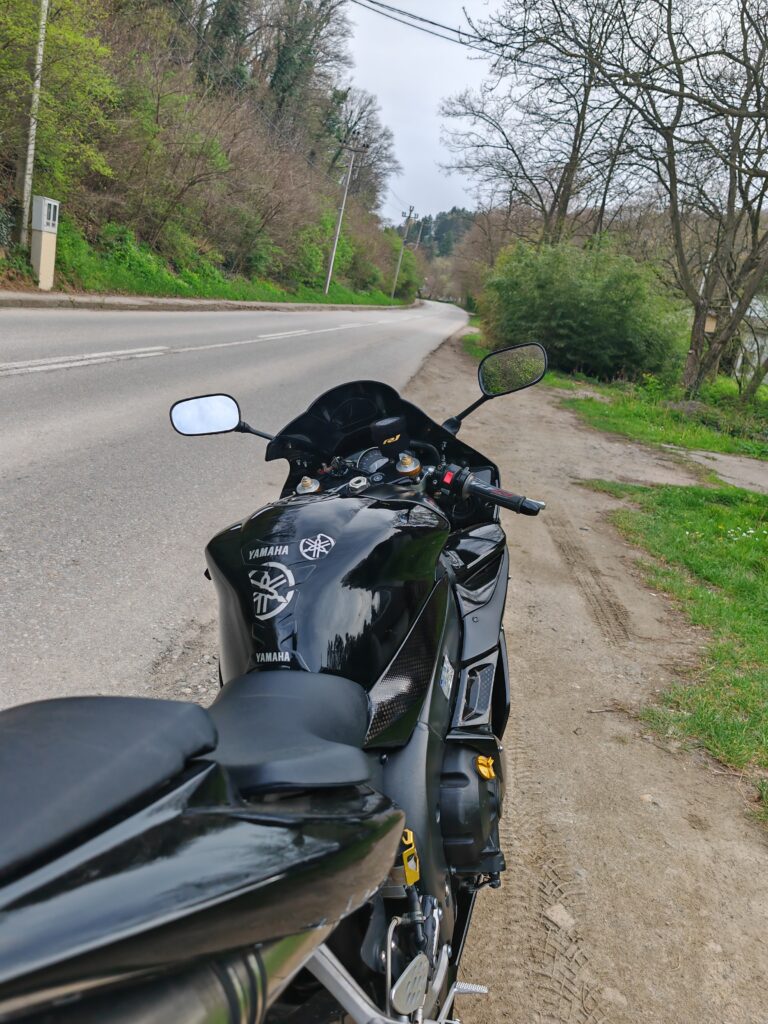
Both versions ran smaller 988cc long-stroke engines but still produced more power and torque throughout the rpm range.
The 02-03 GSX-R often made 145 horsepower at the rear wheels while the K3 around 150 hp. Both had the Yamaha R1 soundly beaten.
Yamaha’s response?
Yamaha decided not to further develop the existing R1 and its engine, but rather opt for a completely new motorcycle and engine design that relied on a high rpm engine to claw back the 10-20 horsepower it lost to competitors.
Replaced was the long-stroke and torque-laden engine that many adored, now with a much higher revving short-stroke engine.
The new 2004 Yamaha engine that superseded the 02-03 R1 made much more power than the claimed 152 horsepower and 78ft/lb of torque of the latter.
The new engine was substantially more powerful making similar claimed power to Suzuki’s K3/K4 GSX-R1000, Honda’s new 2004 CBR1000RR Fireblade as well as Kawasaki’s bonkers new 2004 ZX-10R.
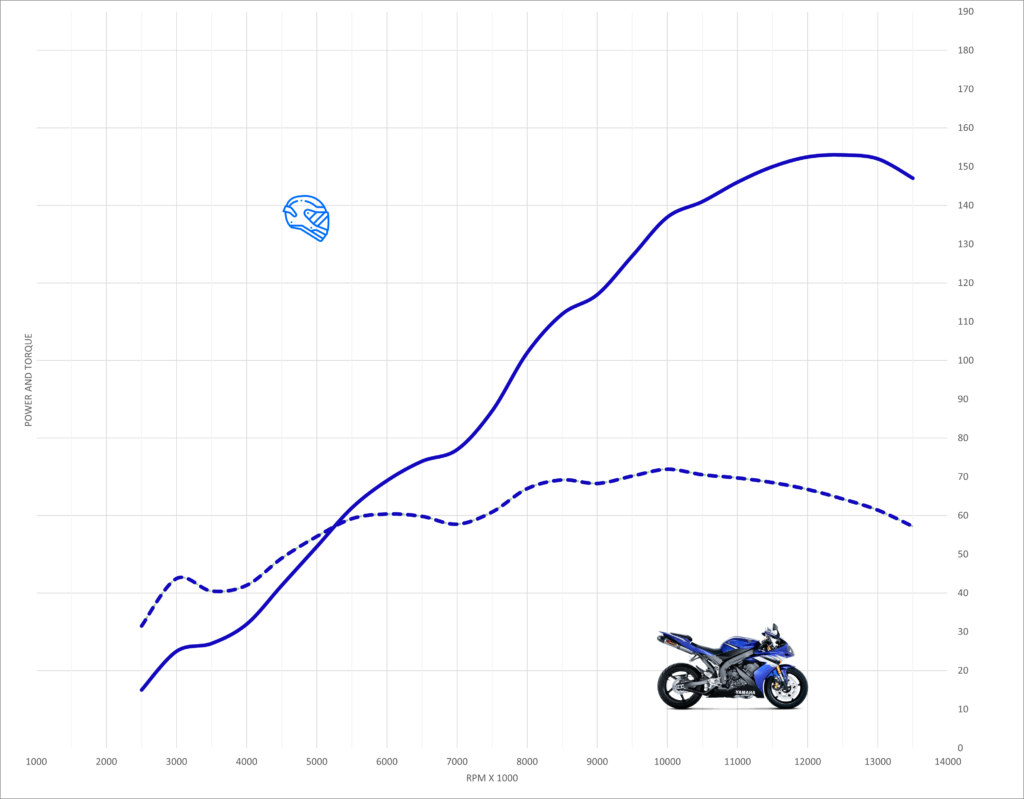
04-06 Yamaha YZF-R1 Dyno Curve
The claimed power output for the new 2004 Yamaha YZF-R1 was 172 horsepower at 12,500 rpm and a claimed torque output of 79 ft/lb at 10,500 rpm.
That’s a full 20 horsepower up on the previous model and with ram air closer to 180 horsepower at the crank.
This increase was a major step forward and brought the new Yamaha YZF-R1 at the very least alongside and ahead of its rivals!
On the dyno, the 04-06 Yamaha YZF-R1 was around 20 horsepower up on the previous model which is in line with the crank claims, laying down 153 horsepower at 12,500 rpm.

Rear wheel numbers vary of course but healthy gains nonetheless and right there with its rivals.
Peak torque was similar to the 02-03 model R1 but lower than the original 98 or 00-01 model producing a respectable 71 ft/lb at 10,500 rpm.
Unlike the previous models, and thanks to its new short-stroke (77 x 53.6mm) design, the new engine revved much higher. This was Yamaha’s design choice to make the 2004 Yamaha R1 competitive.
That shorter stroke engine design meant that the 2004 Yamaha YZF-R1 produced its peak power between 1500 and 2000 rpm higher than the previous R1 models and revved close to 14,000 rpm.
For comparison the 02-03 Yamaha R1 had a rev limiter of 12,250rpm if my memory serves me correctly.
Peak torque is also produced further up the rev counter by around 2000 rpm over previous models which were at around 8000 rpm.
The 2004 R1 was the most powerful R1 ever at the time and matched its rivals in terms of top-end power.
Unfortunately, Yamaha’s impressive feat of increasing output by an extra twenty horsepower did come at some cost to the bottom and midrange output.
There is a distinct lack of low-down power and torque compared to previous models and rivals.
This reality surprised and disappointed many R1 purists who loved the previous models for their instant grunt in the mid and low rpm part of the tacho.
The press was also critical though overall the 04-06 model was very well received.
Between 3000 and 4000 rpm and from 6000 rpm to 8000 rpm the new 2004 Yamaha R1 does not have the same instant and satisfying drive of the previous model R1s.
Despite being competitive up the top of the rpm range, the 2004 R1 was also lacking against its new competitors of the time also in the lower rpm.
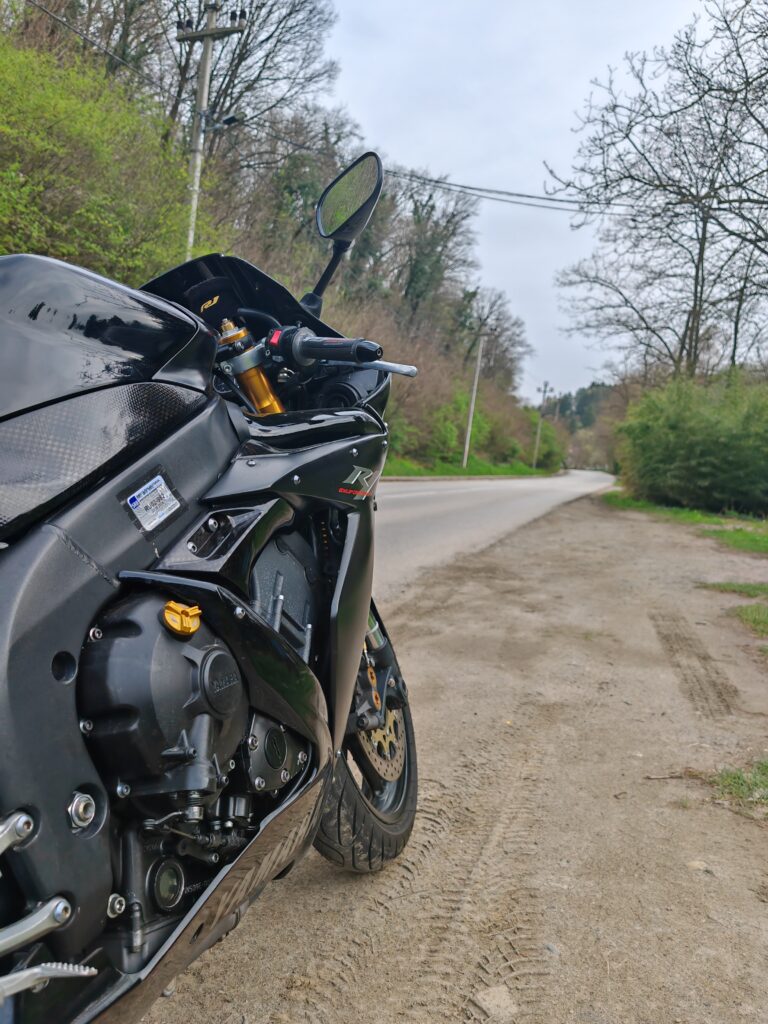
The 2004 Yamaha R1 engine feels like a 750 between 4000-8000 rpm and 600 below 4000 rpm. As a consequence, the engine almost does not feel like it is that of a litrebike.
Beyond 8000 rpm aspersions are quickly put to rest, and you realise very quickly that this motorcycle is a litrebike and a very fast one at that! It pulls with incredible enthusiasm all the way to 14,000 rpm.
From 8000rpm onward the 04-06 Yamaha YZF-R1 is substantially stronger than any previous model R1 and ensures that they feel flat in comparison.
While Yamaha made great progress with their engine for the 2004 model, at the time, rivals were producing similar peak power to the 2004 R1 but still maintained their litrbike bottom and midrange grunt.
Rivals achieved this all the while still using longer-stroke engines than Yamaha.
To be fair to the 2004 Yamaha R1, once you replace the exhaust and set it up on the dyno, much of the lack of bottom-end and midrange is easily filled in ensuring that the 2004 R1 pulls much harder.
But the same can be said for rivals too.

04-06 Yamaha YZF-R1 Thrust Curve
The 2004 Yamaha R1 has different gearing from the previous models.
All gear ratios except first gear are shorter than models before.
Higher-revving motorcycles have more flexibility with gear ratios and can run lower gearing without sacrificing the top speed potential in each gear because their engines can spin faster.
Yamaha did the right thing by lowering gearing slightly as this helped mask the lack of bottom and midrange power.
The longer first gear did exemplify the issue of lack of bottom end but even with lowering the remaining gears the new 2004 R1 below 4000-5000 rpm just does not pick up and go like you would expect a 1000 cc motorcycle.
Additionally, that dip at 7000 rpm too is felt negatively on the road.
At that high in the rpm you’d expect any 1000 cc Superbikes to pull very hard and take off. Od course the R1 does move but not like it’s rivals.
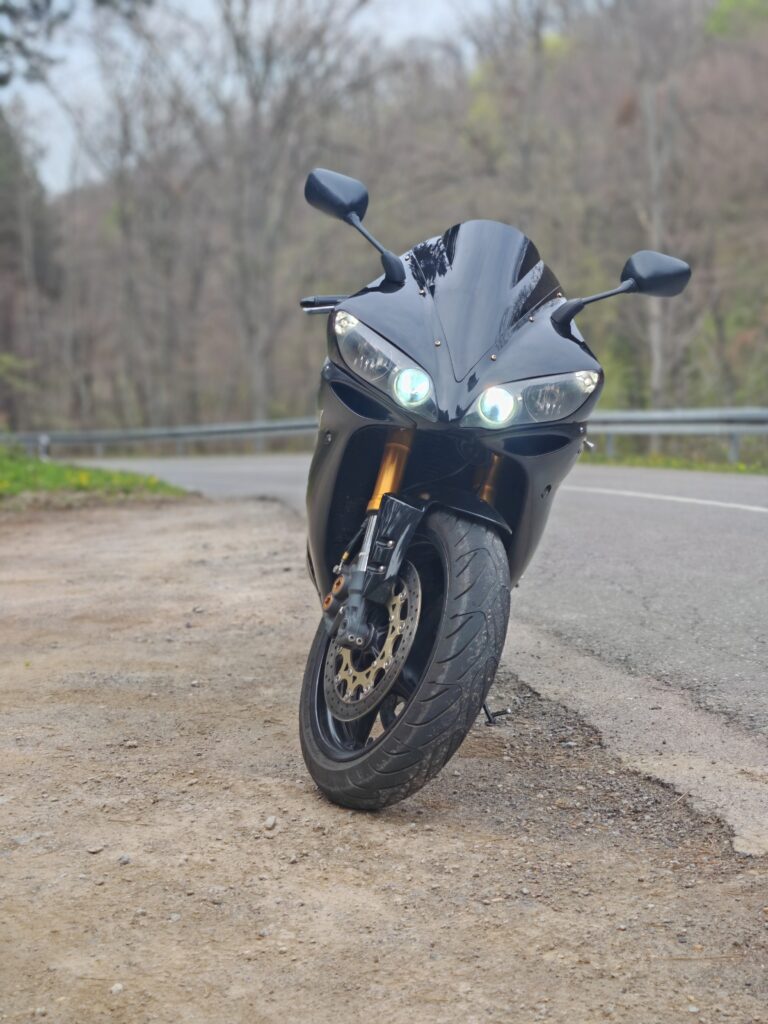
At the time, this was made worse as the K3/4 GSX-R1000 and 04-06 CBR1000RR had motors that were stronger than even previous R1s in the mid and bottom end parts of the rpm.
Consequently, this ensured that the 2004 R1 felt even weaker below 8000 rpm because rivals got better.
If you have not recently jumped off of another 1000 cc motorcycle, the 2004 R1 feels fine in isolation, but the lethargic drive is still very noticeable below 5000 rpm.
I had not long jumped off of a 2015 Yamaha R1 which does not have the strongest low end but felt much stronger than the 2004 engine.
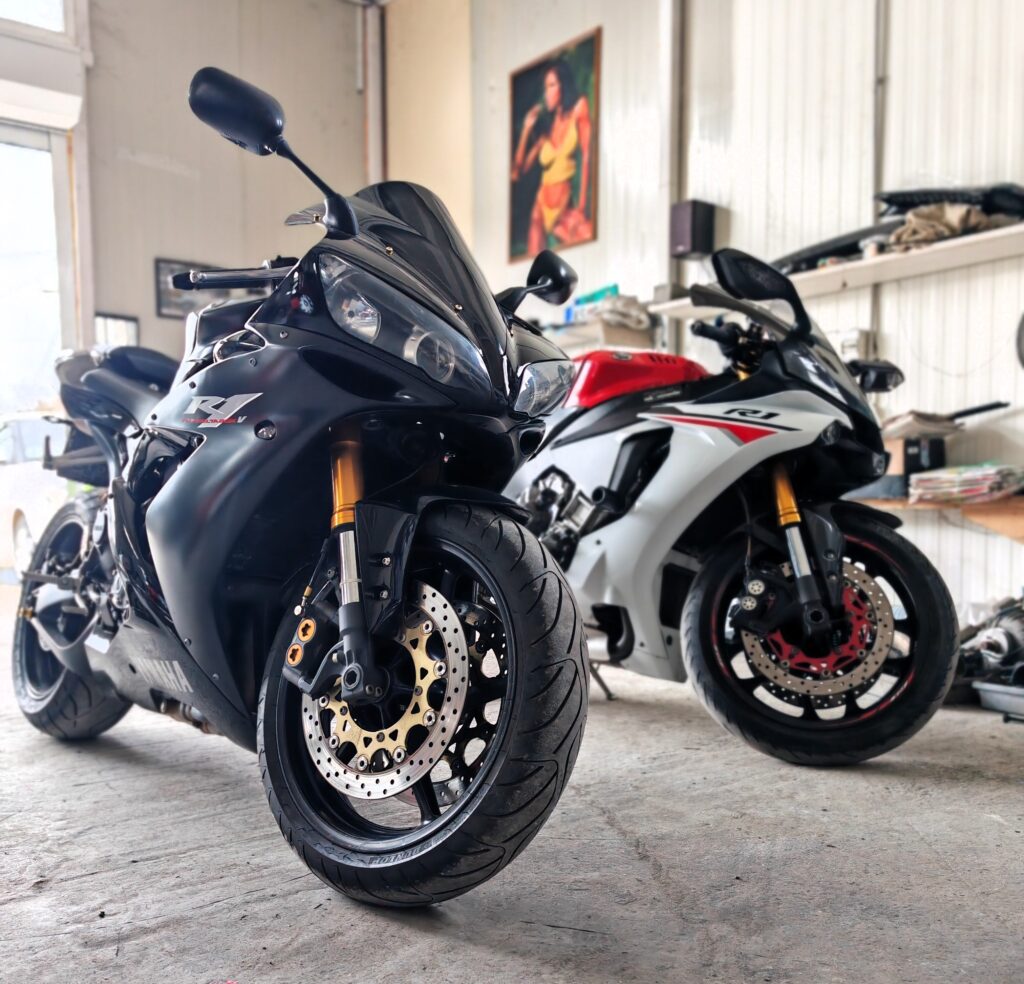
If you crack the throttle at 5000 rpm, it’s promising but then it kind of hesitates and does not pick up as you would expect through to 7000 rpm.
Once you hit 8000 rpm, you must hold on tight as the turbine-like engine really wakes up and just keeps pulling right to 14,000 rpm like no other R1 before it.
Even against the latest 200 horsepower motorcycles, the top-end kick of the 2004 Yamaha R1 feels very fast and not like a 20-year-old motorcycle
The 2004 Yamaha R1 still felt very fast once spinning even not long after riding the 2015 version which is very impressive.
In-gear speeds at 5000 rpm
| Speed at 5000 rpm | 04-05 CBR1000RR | 04-06 YZF-R1 | 03-04 GSX-R1000 | 04-05 ZX-10R |
| 1st | 34.1 mph | 35.9 mph | 35.3 mph | 38.9 mph |
| 2nd | 44.6 mph | 44.1 mph | 46.2 mph | 48 mph |
| 3rd | 54.8 mph | 51.6 mph | 56.4 mph | 56.7 mph |
| 4th | 62.8 mph | 59.8 mph | 65.5 mph | 64.7 mph |
| 5th | 69.2 mph | 66.7 mph | 72.8 mph | 71.4 mph |
| 6th | 74.6mph | 71.7mph | 78.5 mph | 75.5 mph |
To get the best out of the 2004 R1 engine, it has to live above 8000 rpm which is where it thrives and is the point where it feels like a proper fast 1000 cc Superbike.
If you like the high rpm and ‘thrashy’ nature of 600s but want more power, the 2004 R1 motor is great.
This is because the engine thrives on revs and sounds brilliant as it comes on cam at 8000 rpm and howls to an indicated 14000 rpm plus.
Like a 600 you will have to work the gearbox more often than other 1000 cc Superbikes but it is hugely satisfying if you have the room on the road, as you will be hitting some serious speeds stretching any gear out.
As a litrebike, it is also more forgiving because of that softer bottom end. If you are coming from a 600 it would make a good choice as a first litrebike.
On the highway, it still has more than enough power and acceleration to overtake slow-moving traffic in sixth gear. After all it is still a 1000 cc Superbike!
If you let your speed drop below 60 mph (in sixth) you can be left wanting a little more pickup. In this scenario, fifth gear or even fourth gear might be needed if you really need the job done quickly.
This is because in sixth gear at 60 mph or below rpm starts to fall into that void below 5000 rpm where power and torque is lacking.
Any of the previous R1s handled this scenario much better not ever needing to drop down a gear and feeling like they were in fourth gear instead of sixth.

04-06 Yamaha YZF-R1 Acceleration through the gears
The early thousands were the start of the Superbike power wars where 1000 cc Superbikes started to make similar peak power to the first generation Suzuki Hayabusa and ZX-12R.
The amazing thing to consider was that this new generation of Superbikes were 40-50 kg lighter in some cases but made the same power as those Hyperbikes.
The Superbikes of this generation weren’t as aerodynamic as the Hyperbikes but matched and beat them in acceleration at least up to 160-170 mph if from a roll.
It was only then that the roomier and slipperier Hyperbikes would be able to edge ahead and win out right up top.
Being the most powerful R1 to date, pretty much meant that it was the fastest R1 ever too.
The lack of bottom and midrange does not hinder the 2004 R1 when it comes to flat-out acceleration through the gears.
That’s because you’ll never likely use anything below 8000 rpm unless you mess up your launch and it bogs down.
Bog down it will if you’re clumsy with the clutch on launch!!

So you really need a lot of clutch slip to get the 2004 R1 moving otherwise get used to 4.5 four-second 0-60 mph times.
8000 rpm or above is exactly where you need to slip the clutch as anything lower and indeed the 2004 R1 will bog down.
Like earlier R1s, the clutch feel is not the best.
Once you are familiarised, and due to the 2004 R1 having a longer first gear you do need to slip the clutch a little longer than the previous models.
After slipping for what seems like an eternity until the speed catches up with the rpm, if you get it right the 2004 Yamaha R1 will dip below three seconds to 60 mph with a best time of 2.99 seconds and 0-100km/h in 3.21 seconds.
Those 0-60 mph benchmarks can even happen before the clutch is fully engaged!
Once the clutch is fully engaged you can open her up and twist that throttle as close to the stop as you dare and drive her onward toward 100 mph.
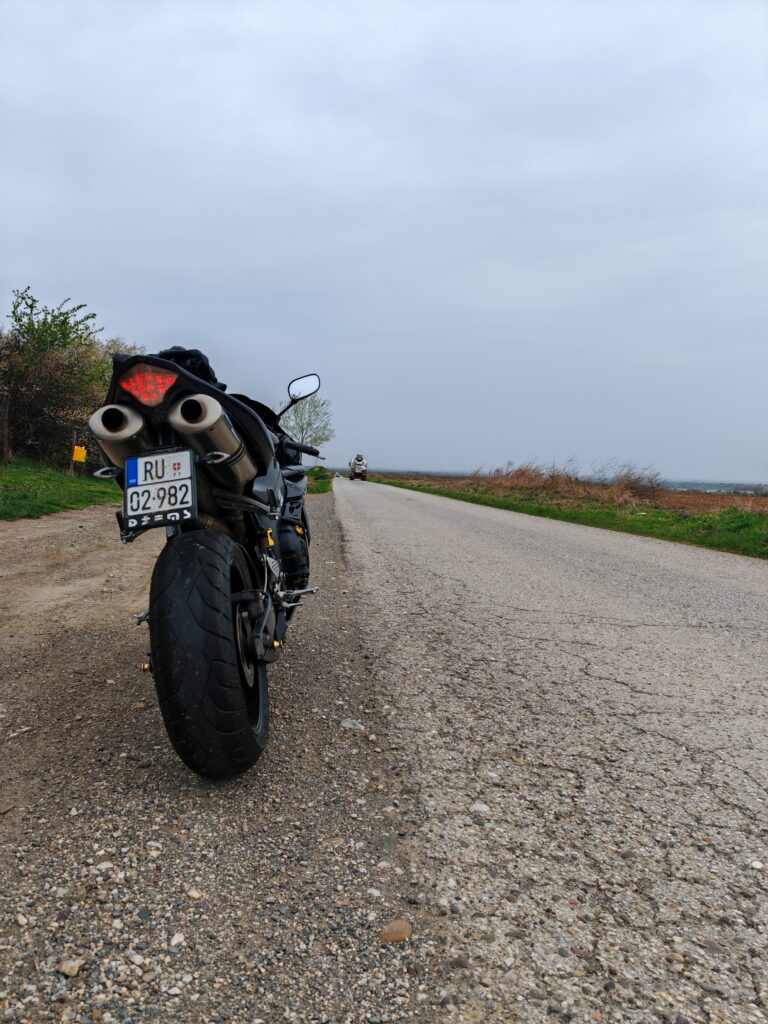
Surprisingly even in first gear, the 2004 YZF-R1 is not overly keen to wheelie, but will of course if you’re too keen.
But you can drive it hard and it just digs and accelerates.
But like any litrebike, you’ll have to put as much of your weight over the long tank as possible to help you get as close to 100 % throttle as you can/dare.
Despite the speedo showing 100 mph plus, even if you kiss the 2004 R1s rpm limiter at 13,750 rpm in first gear, your actual real speed will be around 98 mph.
All speedos lie, some worse than others.
This means an inconvenient gear change into second gear is necessary to hit a real 100 mph, adding a few tenths to the 2004s R1s 0-100mph mph time of 5.55 seconds.
Despite this, the time is fantastic.
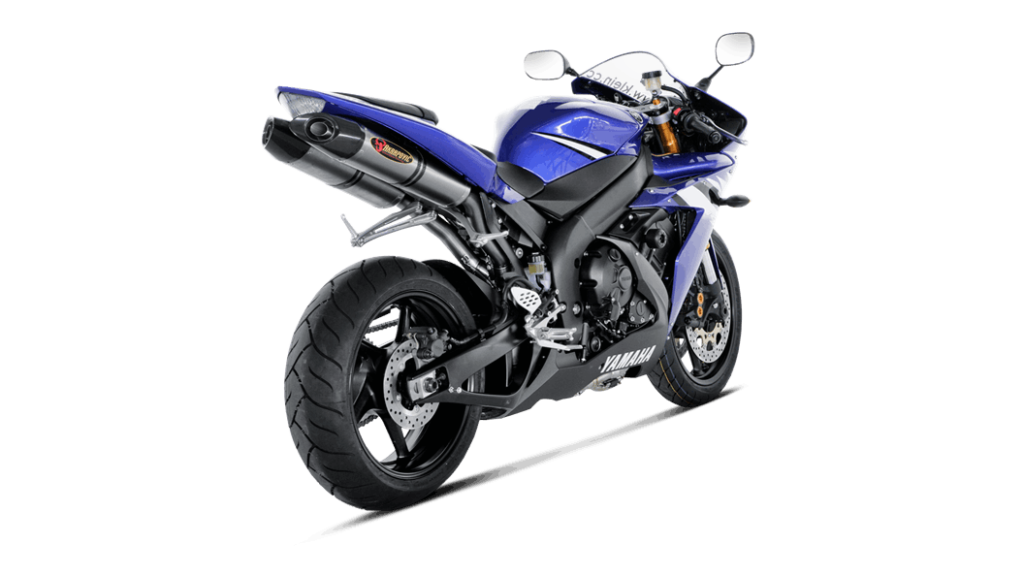
The 2004 R1 will still wheelie in second gear if your gear change is a little abrupt from the typically clunky Yamaha gearbox.
Clutchless changes help but any bump or undulation will have the wheel chasing for the sky.
If you get it settled in second gear nicely, just keep feeding the ballistic R1 gears as it piles on rpm and it moves surprisingly well for a 20-year-old motorcycle.
If the above plays out nicely and you launch well, shift at around 14,000rpm and the 2004 Yamaha R1 will light up the strip and lay down a Quater Mile time of 10.31 seconds at 144 mph as it crosses the 402m mark.
Not long after the quarter mile sprint the Yamaha R1 will hit 150 mph in only 11.24 seconds. This result is invalid because 1% slope but is so borderline that it gets a pass.
Besides it consistently did sub 12 second 0-150 mph times with the rider being the limiting factor. I’d bet it’d crack a sub eleven second 0-150 mph with a more skilled rider.

From around 160 mph onwards is the speed at which the latest R1s and Superbikes will start to pull ahead and disappear.
Compared to the previous R1s, the 2004 model is a larger and roomier motorcycle, and a little easier to get into a tuck for taller riders.
The only letdown is the factory screen which is very low. The front end is wider too but the advantage of that is a little more protection for elbows and legs from the elements.
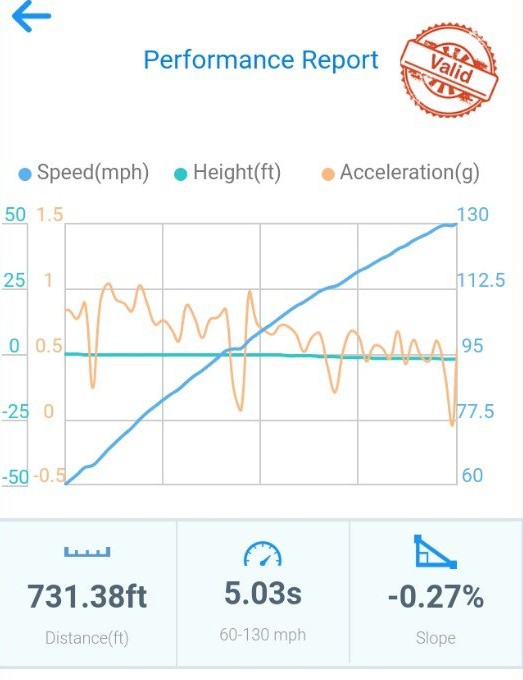
The 60-130 mph time is also very fast at only 5.03 seconds. To achieve this time you must use first gear and clutchless change. Roll along at 50 mph and nail the throttle. It’s surprisingly consistent too.
04-06 YZF-R1 top speed is 180 mph
The 2004 R1 is restricted to 187 mph like many other Superbikes of the last twenty years or so. Your results may vary though you can at least expect a 2004 Yamaha R1 to hit a true 180 mph top speed.
It can achieve its top speed in fifth gear right at and very close to the limiter.
At least for me, changing into sixth gear will not change the top speed unless you have a little more power or favourable conditions.
This is because once into sixth gear, rpm just stops dead with the Yamaha 04-06 YZF-R1 not having the power to pull it past 12,600 rpm in top which on the tacho reads around 13,000 rpm.
If the 2004 R1 could hit its limiter in top gear the speed would be just shy of 200 mph at 197.1 mph.
If you are a smaller rider you can expect an additional 5-6 mph up top.
With a flash or tune, exhaust and so on it’s a 190 mph motorcycle for most people.
How does the first Yamaha YZF-R1 compare to the latest version?
| 04-06 Yamaha YZF-R1 Top Speed And Acceleration | |
| Speed | Time |
| 0-10 mph | 0.60 |
| 0-20 mph | 1.0 |
| 0-30 mph | 1.52 |
| 0-40 mph | 1.99 |
| 0-50 mph | 2.49 |
| 0-60 mph | 2.99 |
| 0-70 mph | 3.64 |
| 0-80 mph | 4.11 |
| 0-90 mph | 4.77 |
| 0-100 mph | 5.55 |
| 0-110 mph | 6.22 |
| 0-120 mph | 7.20 |
| 0-130 mph | 8.17 |
| 0-140 mph | 9.63 |
| 0-150 mph | 11.24 |
| 0-160 mph | 13.85 |
| 0-170 mph | 17.42 |
| 0-180 mph | 41.62 |
| 60-130 mph | 5.03 |
| SS/QM | 10.31 @ 144 mph |
| SS/KM | 18.62 @ 172 mph |
| SS/Mile | 26.27 @ 176 mph |
| Top Speed | 180 mph |




















